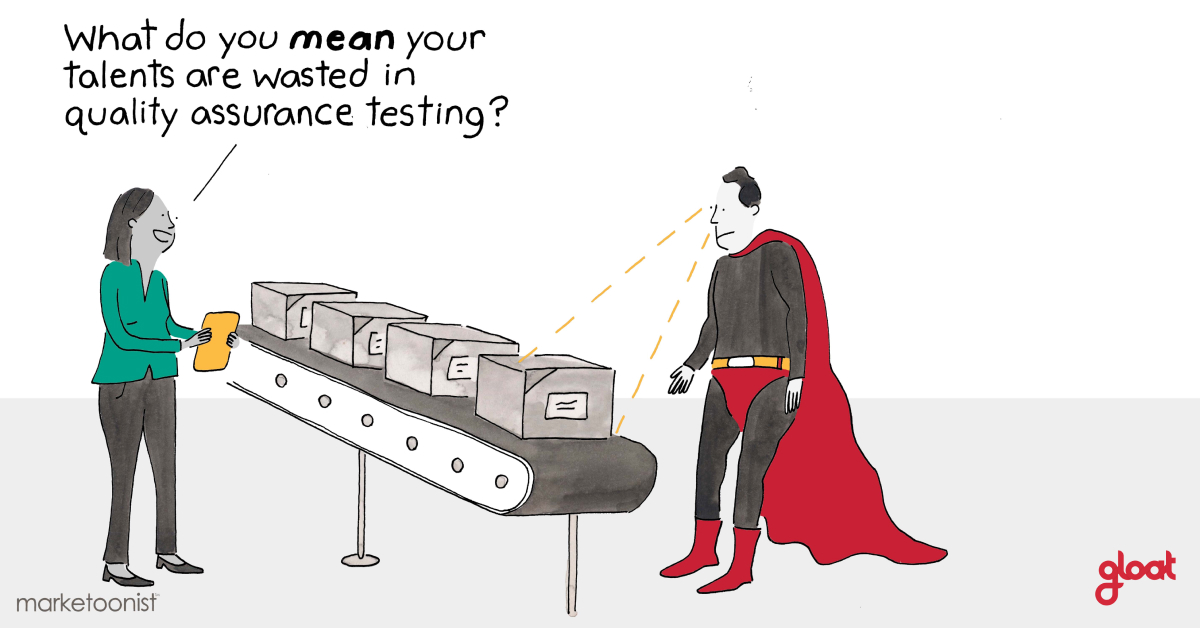3 Reasons why internal mobility is a must for Baby Boomers
Older employees will save the day during the Big Quit. Here’s how to engage them:

As the Great Resignation nears its one-year anniversary and quit rates consistently hover around 4 million employees per month, employers are feeling the pressure. But there’s one key segment of the workforce that many businesses are overlooking: Baby Boomers.
While the eldest generation of employees may have reached the traditional retirement age, many Baby Boomers aren’t ready to call it quits. In fact, nearly 80% of workers between the ages of 57 and 75 say they’re not interested in leaving the workforce yet, and they’re seeking roles with a more flexible schedule.
Now that hiring competition has reached a peak, businesses can’t afford to overlook talent sources, especially not the ones with the level of knowledge and expertise that Baby Boomers bring to the table. But there’s still a lot of uncertainty about what it takes to create a working model that appeals to these employees.
Baby Boomers and the rise of semi-retirement
The traditional 40-year career might have made sense a few decades ago. But longer life expectancies and better healthcare outcomes mean it’s time to rethink the way we structure careers. And a key part of that will be strategically utilizing Baby Boomers, or employees who were born after World War II, generally between 1946 and 1964.
Rather than fully exiting the workforce, many Baby Boomers are gravitating towards semi-retirement. 8 in 10 employees in this generation are looking for more flexible schedules, with two-thirds expressing interest in moving to a consulting role, and 59% acknowledging that they would be willing to work reduced hours with reduced benefits.
Unfortunately, many organizations don’t have a strategy for accommodating this level of flexibility. Only 21% of Baby Boomers say their employer offers semi-retirement arrangements, despite the high demand for it and the talent shortage exacerbated by a pandemic-induced retirement spike.
The benefits of a multi-generational workforce
Baby Boomer’s presence in the workforce yields benefits that extend far beyond overcoming the Big Quit. Multi-generational workforces are associated with several advantages, including
Diversify perspectives
Like any other kind of diversity, generational diversity is a sizable advantage. Employees from different generations bring their own unique perspectives into conversations, creating a broader range of knowledge and fueling greater innovation.
Enhance learning and mentoring opportunities
Baby Boomers have an unmatched level of historic market knowledge and contextual expertise. Rather than keeping those insights siloed, why not take launch a mentoring program that empowers your employees to share their knowledge with their less experienced colleagues?
Improve performance and productivity
Having a multi-generational workforce doesn’t just benefit your employees and your culture; it also positively impacts your bottom line. Research links generational diversity to higher employee productivity and retention rates, as well as greater profits and growth projections.
3 Reasons why internal mobility is the answer to engaging Baby Boomers
Given the unmatched value that Baby Boomers bring to the workforce, it’s in every organization’s best interest to figure out how they can attract and retain employees of this generation. Here’s why internal mobility is going to be non-negotiable:
#1. Baby Boomers are looking for something different
Baby Boomers might not be interested in retiring, but that doesn’t mean they want to keep doing the same role they’ve been in for years. When polled about what they’re looking for from semi-retirement, most employees expressed an interest in transitioning to a new role and taking on responsibilities related to subject matter expertise, mentoring, or consulting.
#2. Internal mobility enables employers to tap into Baby Boomers’ strengths
Baby Boomers have strengths and capabilities that other employees can’t match. They’re seasoned experts, who have decades of experience to draw on whenever they need to make a decision. Rather than expecting Baby Boomers to stretch to fit predefined roles, why not take a more flexible approach to architecting work that lets leaders tap into their unique strengths?
#3. Flexibility is a key part of the equation
Flexibility sits at the heart of successful semi-retirement strategies. Although most Baby Boomers expressed an interest in working, they may not want to put in the same hours and adhere to the same schedules that they did earlier in their careers. The most successful semi-retirement schemes empower employees to work when it makes sense for them, instead of holding them to strict schedules that may not align with their lifestyles and priorities.
How to get semi-retirement right with a talent marketplace
There’s no doubt that internal mobility and flexibility are going to be hallmarks of impactful semi-retirement strategies. In the past, accommodating this level of fluidity was challenging for many organizations because work was broken down into rigid hierarchies and neatly defined jobs.
Fortunately, most businesses are embracing more dynamic approaches to unlock the kind of agility the new world of work requires. As workforce pixelation becomes more prevalent work gets deconstructed into projects and gigs, forming a landscape that is ideal for Baby Boomers, who are looking to put their skills and expertise to use without taking on a traditional, full-time role.
From a technical standpoint, this shift isn’t possible without a talent marketplace. The two-sided platform makes it easier than ever to match employees to relevant opportunities based on their skills, ambitions, and capacities. By identifying meaningful projects, gigs, and mentoring opportunities, talent marketplaces can ensure Baby Boomers are doing high-impact work in a flexible manner, creating a win-win for your employees and your business.
The right semi-retirement strategy will enable your business to tap into talent pools that would otherwise be out of reach, creating a decisive advantage during the Big Quit.





